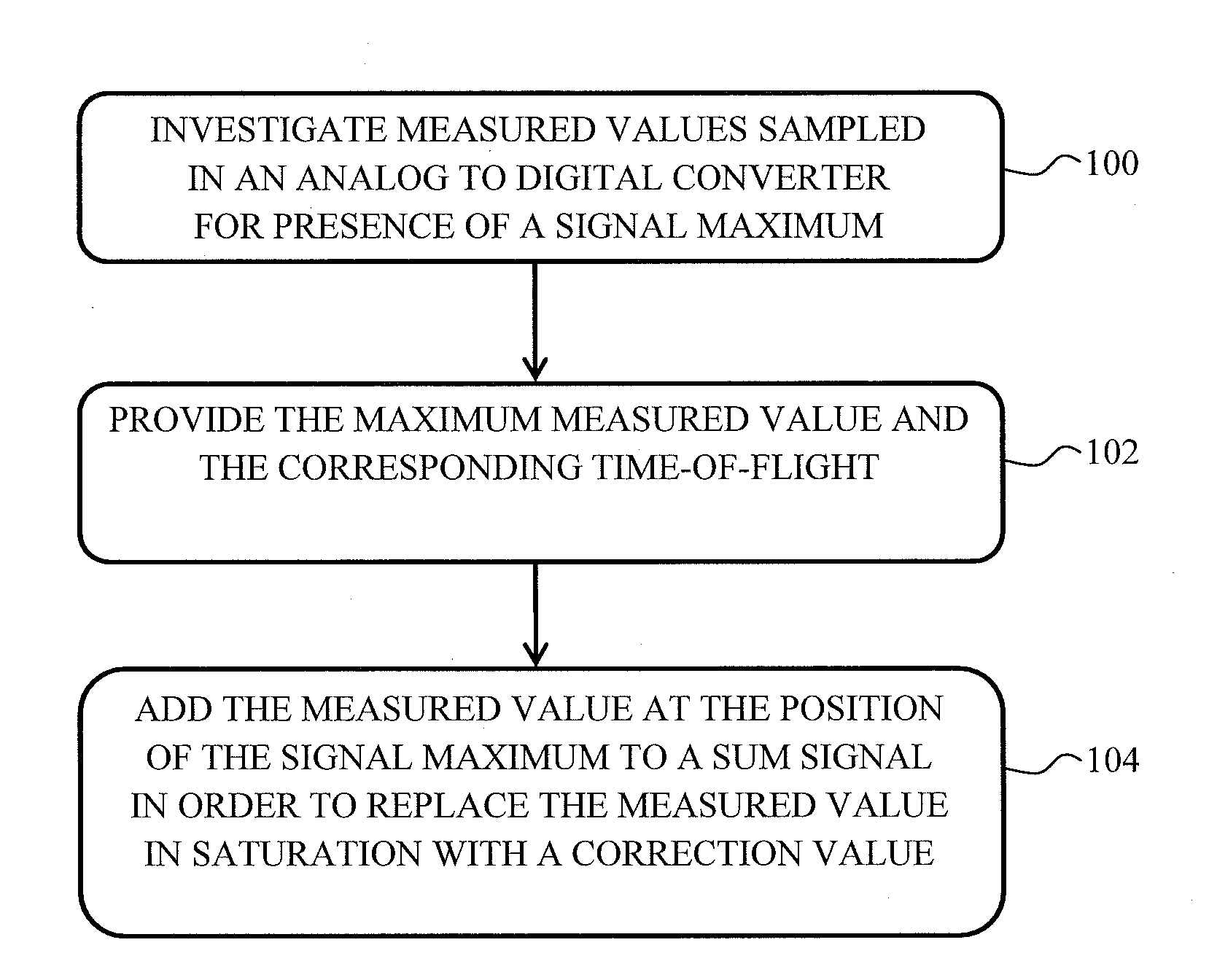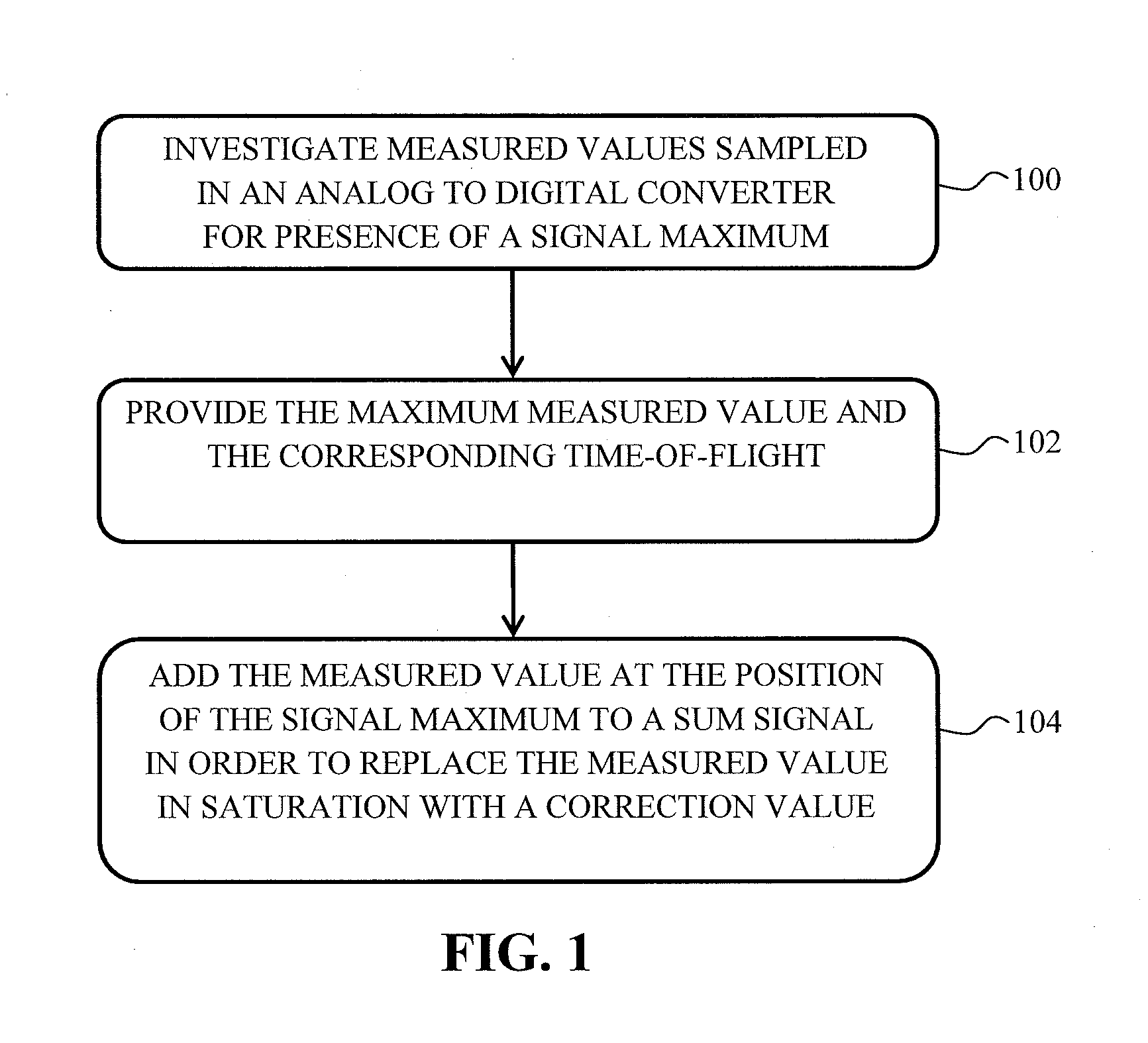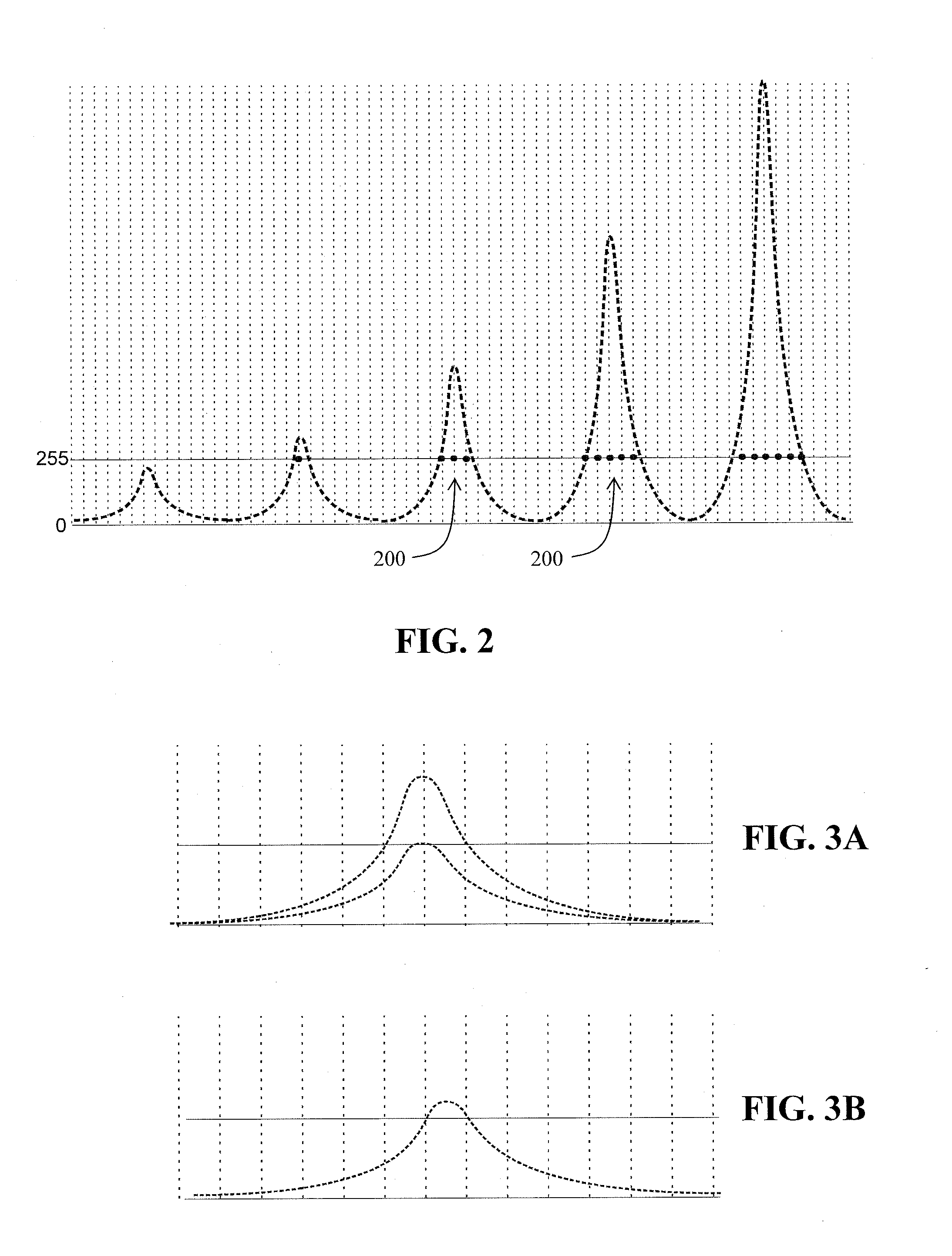Saturation correction for ion signals in time-of-flight mass spectrometers
a mass spectrometer and time-of-flight technology, applied in mass spectrometers, separation processes, separation of dispersed particles, etc., can solve the problems of limiting the intensity dynamics of individual time-of-flight spectrum to two orders of magnitude, not fully compensating, and exceeding the saturation limit. achieve the effect of increasing the dynamic measurement range of the spectrum acquisition process
- Summary
- Abstract
- Description
- Claims
- Application Information
AI Technical Summary
Benefits of technology
Problems solved by technology
Method used
Image
Examples
Embodiment Construction
[0025]A method for increasing a dynamic measurement range of a spectrum acquisition of a time-of-flight mass spectrometer is provided. Ion signals that drive an analog-to-digital converter (ADC) into saturation in an individual time-of-flight spectrum are replaced with correction values (also referred to as “corrected values”) where, for example, the saturation values extend over a plurality successive measurements. The correction values may be derived from a width of the ion signals; e.g., from a number of measured values in saturation. Since the signal forms may change as a function of the mass of the ions, the correction values may additionally depend on time-of-flight. The correction values may be stored in a memory device, for example in the foam of a table and arranged, for example, according to signal widths and time-of-flight ranges. The table may be populated with values obtained from relatively large numbers of calibration measurements or calculated using measured or calcu...
PUM
 Login to View More
Login to View More Abstract
Description
Claims
Application Information
 Login to View More
Login to View More - R&D
- Intellectual Property
- Life Sciences
- Materials
- Tech Scout
- Unparalleled Data Quality
- Higher Quality Content
- 60% Fewer Hallucinations
Browse by: Latest US Patents, China's latest patents, Technical Efficacy Thesaurus, Application Domain, Technology Topic, Popular Technical Reports.
© 2025 PatSnap. All rights reserved.Legal|Privacy policy|Modern Slavery Act Transparency Statement|Sitemap|About US| Contact US: help@patsnap.com



